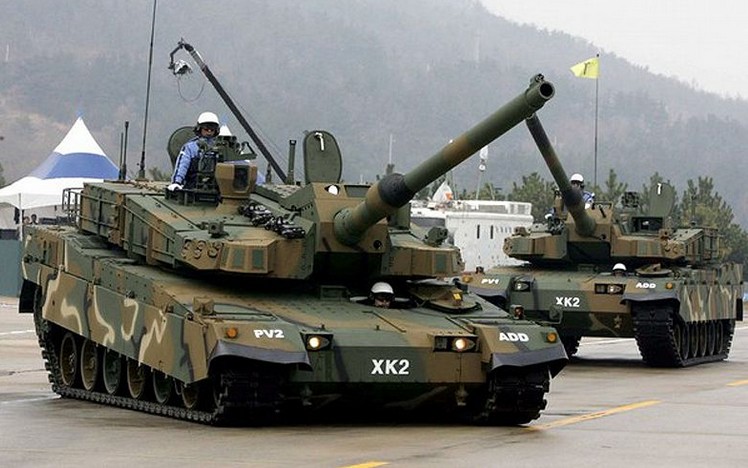

The engine was not ready for service during early- and mid-stages of prototype tests, and MTU-890 was used as a temporary measure until the domestic engine could be manufactured. The Black Panther features new 1,500 horsepower (1,100 kW) engines (up from the 1,200 horsepower (890 kW) of the K1 series), developed and manufactured by Doosan Infracore Corporation and STX Engine Corporation. This is not the case since the K2 uses a 55 caliber (6.6 m) main gun. Upon reaching its production phase, several media sources have mistaken K2's main gun with a 52 caliber (6.24 m) main gun similar to the one used on Leclerc. The Black Panther reached its production phase on March 2nd, 2007, when the first of the three production models rolled out the assembly line in Changwon, South Korea. The vehicle is, however, capable of mounting the 140 mm gun with minimum modifications should the need arise.Ī few images and videos have been released by the ADD in 2003, providing some insights to what the new tank might be equipped with. This plan, however, fell apart when Rheinmetall halted the research due to the lack of foreseeable threats that their latest gun, the 120 mm / L55, could not defeat for several years into the future, which also led to the K2's gun being changed to the L55 along with the considerations for ammunition capacity. The original requirement for the K2's main gun was the experimental 140 mm smoothbore gun from Rheinmetall. The unmanned turret design was scrapped during the design phase, and the manned turret version completely took over. There were two major designs that were underway, one being fitted with manned turret and another being fitted with unmanned turret. The vehicle is manufactured by Rotem, with Samsung Techwin and World Industries Ace Corporation manufacturing and supplying various parts and equipment of the vehicle.

More than 90% of the vehicle's design is domestic. Over the course of next 11 years and spending approximately USD$230m, the design was finally branded as production-ready. Although K1 and K1A1 were more than adequate to counter opposing North Korean tanks, work was started in 1995 to develop and field a newer main battle tank with heavy emphasis on domestic technique to further modernize the South Korean military and allow the vehicle to enter export market without pressure from outside.ĪDD was given the task of developing a new main battle tank with state-of-the-art technologies.


 0 kommentar(er)
0 kommentar(er)
